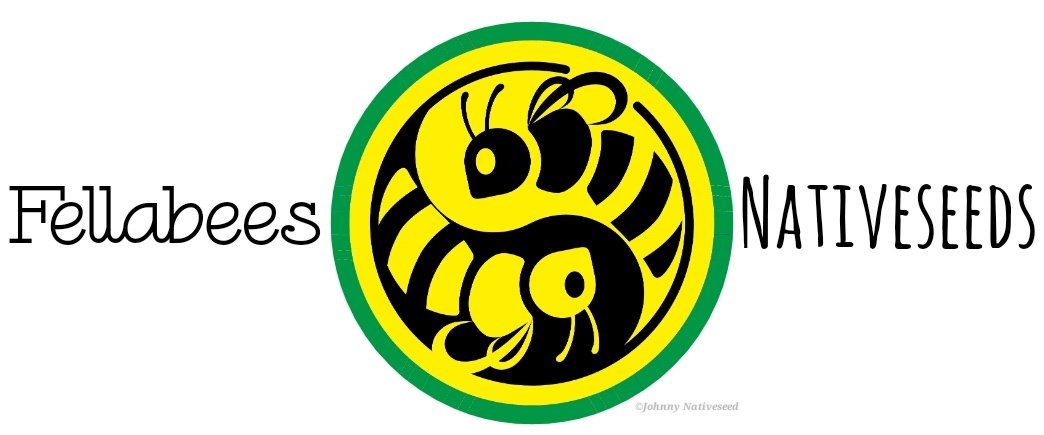 Image 1 of 5
Image 1 of 5

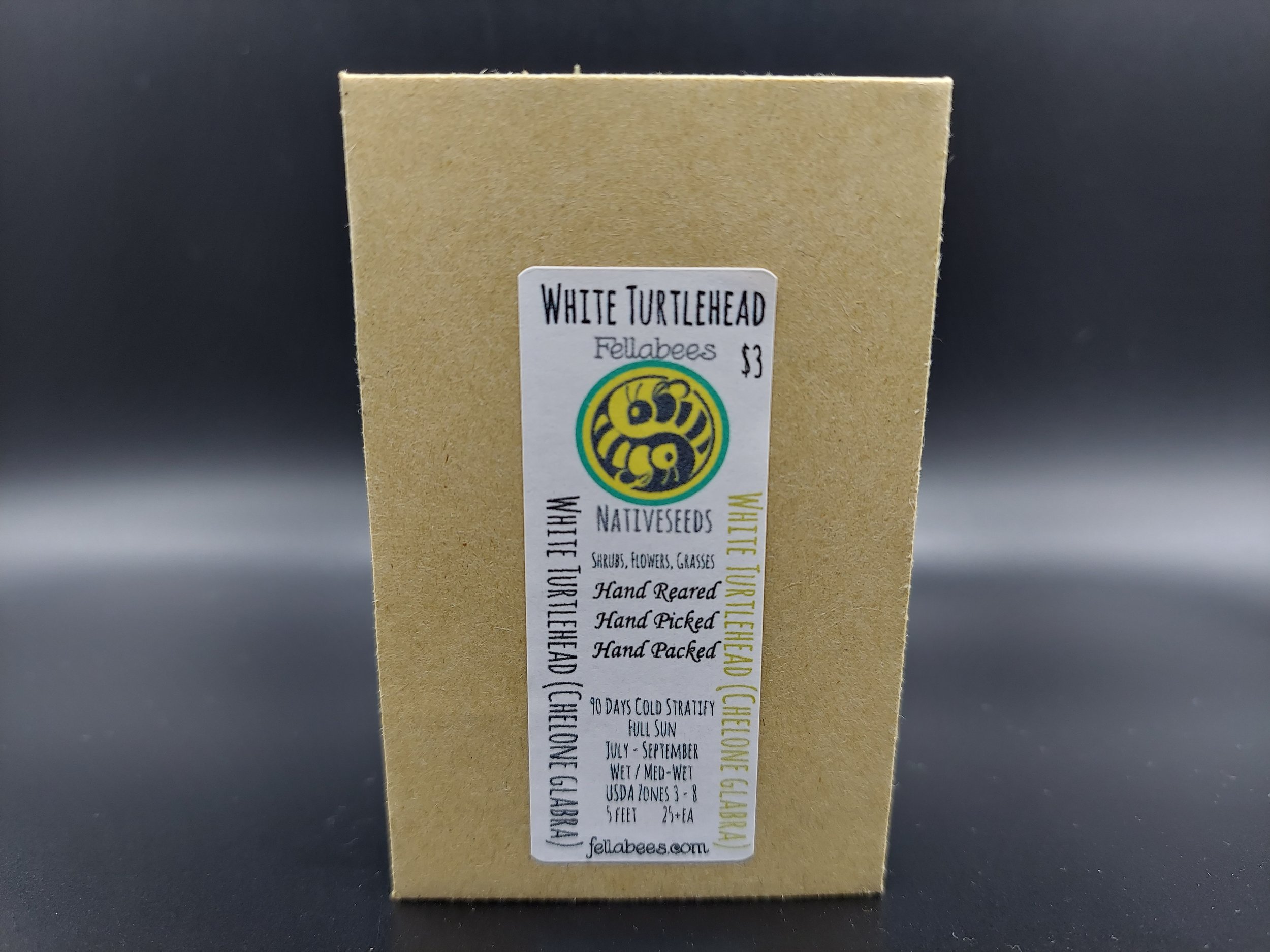 Image 2 of 5
Image 2 of 5

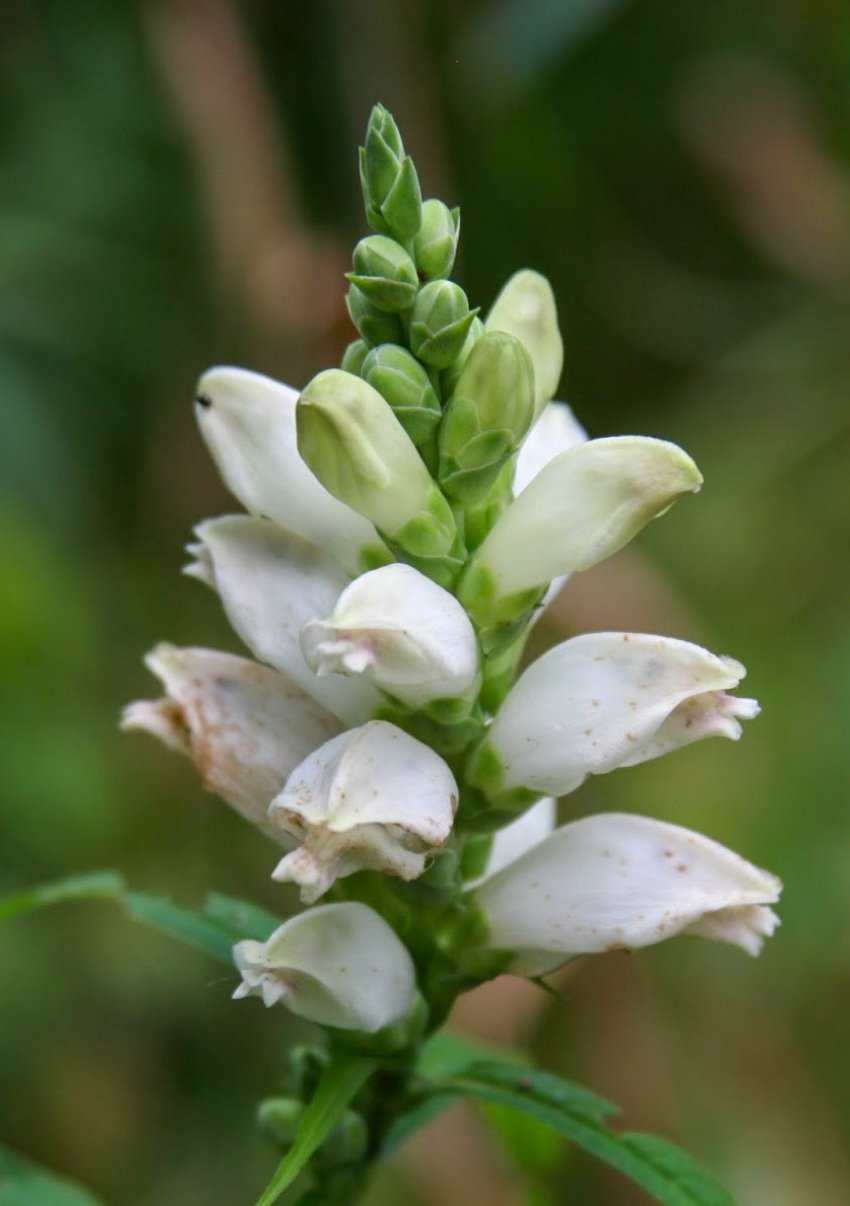 Image 3 of 5
Image 3 of 5

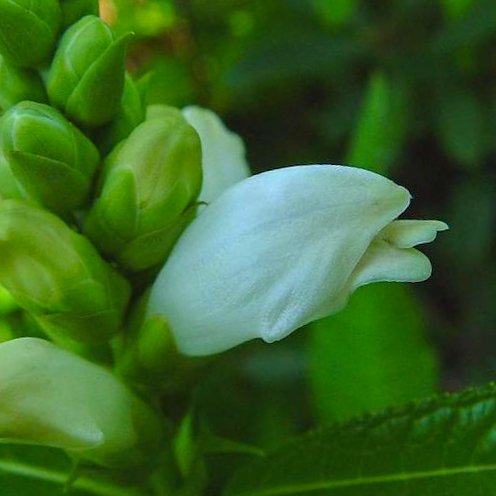 Image 4 of 5
Image 4 of 5

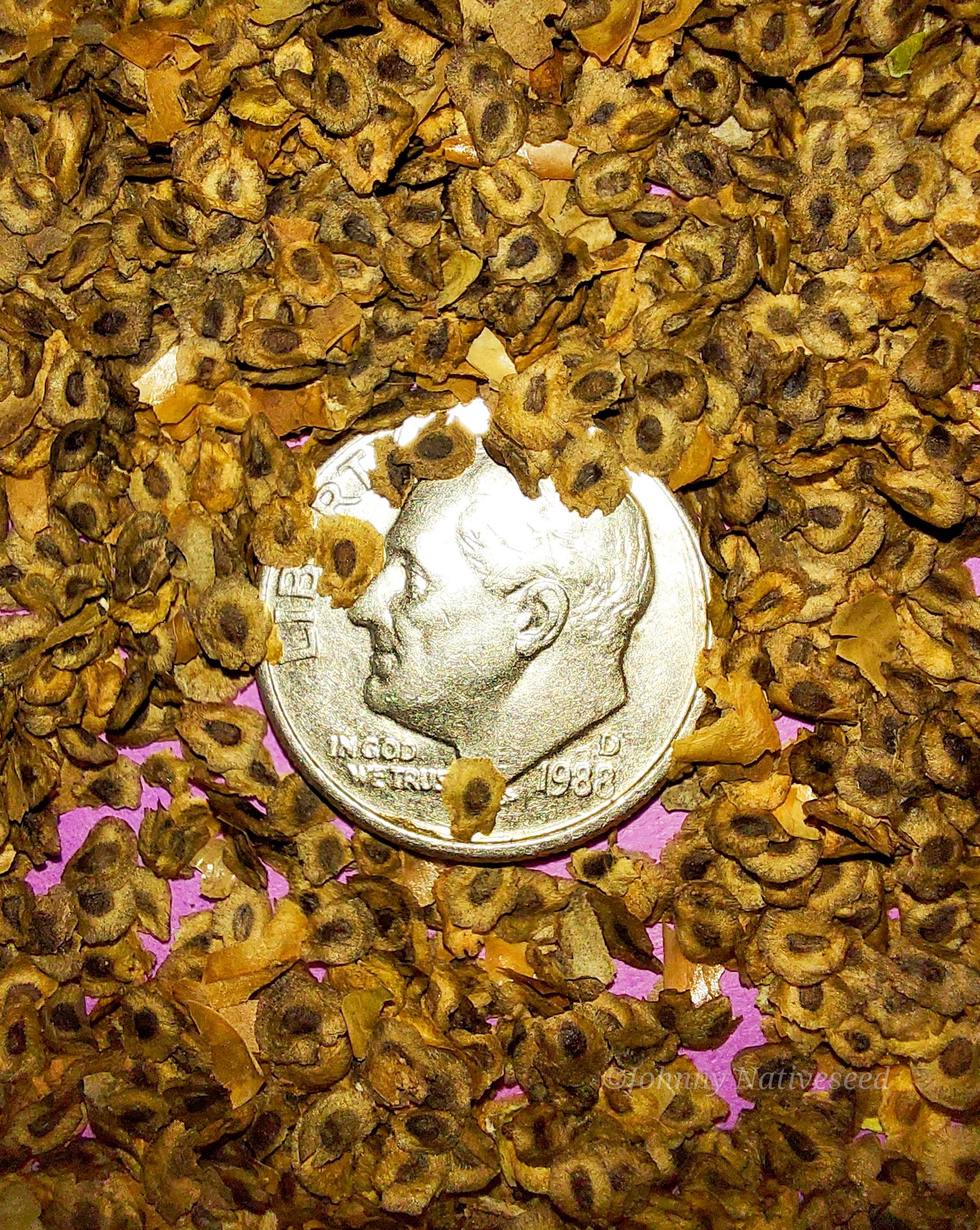 Image 5 of 5
Image 5 of 5






White Turtlehead (Chelone glabra)
White Turtlehead (Chelone glabra)
Chelone glabra, or more commonly known as White Turtlehead, is a herbaceous species of plant that is native to Eastern North America.
Its native range extends from Georgia to Newfoundland and Labrador and from Mississippi to Manitoba.
Its common name comes from the appearance of its flower petals, which resemble the head of a tortoise. In Greek, chelone means "tortoise". Its natural habitat is wet areas, such as riparian forests and swamps.
This remarkable species has opposite, simple leaves, on its stout, upright stems. The flowers are white, forming in late summer and into early fall.
It is the primary plant on which the Baltimore checkerspot butterfly will carry out its lifecycle (although the butterfly to some extent, is known to use a few other species).
Chelone glabra is a popular browse plant for deer, so it should be guarded and interplanted with natives that deter deer
It is also a foodplant for the sawflies Macrophya nigra and Tenthredo grandis (Hymenoptera: Tenthredinidae) which will draw unique predatory pollinators and even a flea beetle in the genus Dibolia (Coleoptera: Chrysomelidae) has also been shown to feed on it.
This plant has been known to be useful to Indigenous Americans and has been used as a method of birth control by Abenaki people.
This plant is listed as present but rare in several counties of the states of Mississippi and Arkansas.
Plant Details
USDA Zones: 3-8
Germination Needs: 90 Days Cold Stratification / Successful germination is best when direct sown in late fall through winter
Life Cycle: Perennial
Sun Exposure: Full Sun
Soil Moisture: Wet, Medium-Wet
Plant Spacing: 2-3 feet
Height: 5 feet
Bloom time: July, August, September
Bloom Color: White/Cream
Advantages:
Pollinator Favorite: butterflies, moths, bees, wasps, beetles
Bird Favorite: seeds, insects, fruit, nectar, nesting, perchs.
Deer Resistant: Yes
Native to: Wisconsin, Minnesota, Michigan, Iowa, Illinois, Indiana, Ohio, Pennsylvania, New York, Vermont, New Hampshire, Maine, Massachusetts, Rhode Island, Connecticut, Delaware, Maryland, New Jersey, West Virginia, Virginia, Kentucky, Missouri, Arkansas, Tennessee, North Carolina, South Carolina, Mississippi, Alabama, and Georgia
.
.
Packet quantities:
We pride ourselves on ethical, hands on, ecological management, using no mechanical or chemical methods whatsoever.
All of our native seed is hand reared, hand picked, and hand packed from native prairies under our exclusive management, never breaking chain of custody from the field until it is sent to you. Each packet is hand prepared for shipment by us, directly.
Small seed species will contain greater than 20-25 seed
Large seed species will contain greater than 10-15 seed
It is our mission to spread the wealth of native plant and pollinator ecological sustainability, and educate back yard gardeners as well as corporate and government entities in how to germinate, grow, and benefit from native synergies.
Thank you for your support, it is because of you, that we can grow together to do, what we do.🐛🦋🐝🐞🌾🌱🌼🧡
White Turtlehead (Chelone glabra)
Chelone glabra, or more commonly known as White Turtlehead, is a herbaceous species of plant that is native to Eastern North America.
Its native range extends from Georgia to Newfoundland and Labrador and from Mississippi to Manitoba.
Its common name comes from the appearance of its flower petals, which resemble the head of a tortoise. In Greek, chelone means "tortoise". Its natural habitat is wet areas, such as riparian forests and swamps.
This remarkable species has opposite, simple leaves, on its stout, upright stems. The flowers are white, forming in late summer and into early fall.
It is the primary plant on which the Baltimore checkerspot butterfly will carry out its lifecycle (although the butterfly to some extent, is known to use a few other species).
Chelone glabra is a popular browse plant for deer, so it should be guarded and interplanted with natives that deter deer
It is also a foodplant for the sawflies Macrophya nigra and Tenthredo grandis (Hymenoptera: Tenthredinidae) which will draw unique predatory pollinators and even a flea beetle in the genus Dibolia (Coleoptera: Chrysomelidae) has also been shown to feed on it.
This plant has been known to be useful to Indigenous Americans and has been used as a method of birth control by Abenaki people.
This plant is listed as present but rare in several counties of the states of Mississippi and Arkansas.
Plant Details
USDA Zones: 3-8
Germination Needs: 90 Days Cold Stratification / Successful germination is best when direct sown in late fall through winter
Life Cycle: Perennial
Sun Exposure: Full Sun
Soil Moisture: Wet, Medium-Wet
Plant Spacing: 2-3 feet
Height: 5 feet
Bloom time: July, August, September
Bloom Color: White/Cream
Advantages:
Pollinator Favorite: butterflies, moths, bees, wasps, beetles
Bird Favorite: seeds, insects, fruit, nectar, nesting, perchs.
Deer Resistant: Yes
Native to: Wisconsin, Minnesota, Michigan, Iowa, Illinois, Indiana, Ohio, Pennsylvania, New York, Vermont, New Hampshire, Maine, Massachusetts, Rhode Island, Connecticut, Delaware, Maryland, New Jersey, West Virginia, Virginia, Kentucky, Missouri, Arkansas, Tennessee, North Carolina, South Carolina, Mississippi, Alabama, and Georgia
.
.
Packet quantities:
We pride ourselves on ethical, hands on, ecological management, using no mechanical or chemical methods whatsoever.
All of our native seed is hand reared, hand picked, and hand packed from native prairies under our exclusive management, never breaking chain of custody from the field until it is sent to you. Each packet is hand prepared for shipment by us, directly.
Small seed species will contain greater than 20-25 seed
Large seed species will contain greater than 10-15 seed
It is our mission to spread the wealth of native plant and pollinator ecological sustainability, and educate back yard gardeners as well as corporate and government entities in how to germinate, grow, and benefit from native synergies.
Thank you for your support, it is because of you, that we can grow together to do, what we do.🐛🦋🐝🐞🌾🌱🌼🧡
White Turtlehead (Chelone glabra)
Chelone glabra, or more commonly known as White Turtlehead, is a herbaceous species of plant that is native to Eastern North America.
Its native range extends from Georgia to Newfoundland and Labrador and from Mississippi to Manitoba.
Its common name comes from the appearance of its flower petals, which resemble the head of a tortoise. In Greek, chelone means "tortoise". Its natural habitat is wet areas, such as riparian forests and swamps.
This remarkable species has opposite, simple leaves, on its stout, upright stems. The flowers are white, forming in late summer and into early fall.
It is the primary plant on which the Baltimore checkerspot butterfly will carry out its lifecycle (although the butterfly to some extent, is known to use a few other species).
Chelone glabra is a popular browse plant for deer, so it should be guarded and interplanted with natives that deter deer
It is also a foodplant for the sawflies Macrophya nigra and Tenthredo grandis (Hymenoptera: Tenthredinidae) which will draw unique predatory pollinators and even a flea beetle in the genus Dibolia (Coleoptera: Chrysomelidae) has also been shown to feed on it.
This plant has been known to be useful to Indigenous Americans and has been used as a method of birth control by Abenaki people.
This plant is listed as present but rare in several counties of the states of Mississippi and Arkansas.
Plant Details
USDA Zones: 3-8
Germination Needs: 90 Days Cold Stratification / Successful germination is best when direct sown in late fall through winter
Life Cycle: Perennial
Sun Exposure: Full Sun
Soil Moisture: Wet, Medium-Wet
Plant Spacing: 2-3 feet
Height: 5 feet
Bloom time: July, August, September
Bloom Color: White/Cream
Advantages:
Pollinator Favorite: butterflies, moths, bees, wasps, beetles
Bird Favorite: seeds, insects, fruit, nectar, nesting, perchs.
Deer Resistant: Yes
Native to: Wisconsin, Minnesota, Michigan, Iowa, Illinois, Indiana, Ohio, Pennsylvania, New York, Vermont, New Hampshire, Maine, Massachusetts, Rhode Island, Connecticut, Delaware, Maryland, New Jersey, West Virginia, Virginia, Kentucky, Missouri, Arkansas, Tennessee, North Carolina, South Carolina, Mississippi, Alabama, and Georgia
.
.
Packet quantities:
We pride ourselves on ethical, hands on, ecological management, using no mechanical or chemical methods whatsoever.
All of our native seed is hand reared, hand picked, and hand packed from native prairies under our exclusive management, never breaking chain of custody from the field until it is sent to you. Each packet is hand prepared for shipment by us, directly.
Small seed species will contain greater than 20-25 seed
Large seed species will contain greater than 10-15 seed
It is our mission to spread the wealth of native plant and pollinator ecological sustainability, and educate back yard gardeners as well as corporate and government entities in how to germinate, grow, and benefit from native synergies.
Thank you for your support, it is because of you, that we can grow together to do, what we do.🐛🦋🐝🐞🌾🌱🌼🧡
